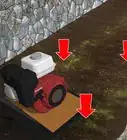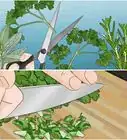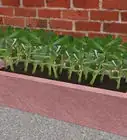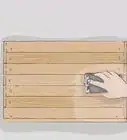This article was co-authored by wikiHow staff writer, Hannah Madden. Hannah Madden is a writer, editor, and artist currently living in Portland, Oregon. In 2018, she graduated from Portland State University with a B.S. in Environmental Studies. Hannah enjoys writing articles about conservation, sustainability, and eco-friendly products. When she isn’t writing, you can find Hannah working on hand embroidery projects and listening to music.
There are 8 references cited in this article, which can be found at the bottom of the page.
This article has been viewed 179,045 times.
Learn more...
Are you tired of clay or wooden planters? Would you like to give your garden a different look? Hypertufa, or tufa, plant pots have a coarsely textured, stone-like appearance that’s pleasing to the eye. With their thick, porous texture, they are good containers for smaller plants, such as cacti, succulents, and alpine plants. These are versatile pots that you make yourself, so they can be any size that your heart desires. Make sure you set aside some time, though, as the hypertufa process can take up to 3 weeks to complete!
Steps
Preparation
-
1Cover a flat surface with a plastic tarp. The best place to do this project is outside or somewhere with a lot of ventilation (like your garage). If you don’t want to get your surface area messy, put down a plastic tarp or sheet to keep it clean. Otherwise, work on the ground or somewhere you don’t mind spilling cement and dust.[1]
- You can find plastic tarps at most hardware stores, and they’re always useful to have around for messy projects like this.
-
2Grab a wheelbarrow or a plastic bucket for mixing. Hypertufa planters will make quite a crunchy mess, and they can stain the containers you use to mix them in. If you’re attached to any of your buckets or tools, don’t use them for this process. Instead, grab a bucket, wheelbarrow, or large plastic bowl that you don’t mind getting a little messy.[2]
- You can also use a large, shallow pan for easier mixing.
- You can clean off your mixing container with a hose when you’re done.
Advertisement -
3Gather cement, peat moss, and perlite. The “ingredients” for your planters are very important, and you actually have a few options that you can choose from. What you absolutely do need, though, is Portland cement (not a mix, just straight Portland cement), sieved peat moss (to remove the sticks and stones), and perlite.[3]
-
4Separate the ingredients out into their ratios. You can make as much or as little hypertufa as you’d like, depending on how many planters you want and how large they are. The most important thing to remember here are the ratios: you always want to use 3 parts peat moss or coir, 2 parts Portland cement, and 3 parts perlite or vermiculite.[6]
- When you measure them out, use volumetric measurements (milliliters and Liters) for more accuracy.
- Separating the ingredients beforehand will be much easier, and it will make your project go faster, too.
-
5Make a mold out of plastic or cardboard. Here comes the fun part: figuring out what size and shape you’d like your planters to be. To stick to simplicity, use a cardboard box or a clean litter box for a rectangular planter. If you want to get a little more fancy with it, you can mold your own shape by using styrofoam and taping it together.[7]
- To make your planter with a divot in the middle (for the plants!), make a square out of cardboard or styrofoam and then put a smaller square inside of it.
- If you’re using a wood mold, be sure to line it with plastic first so the mixture doesn't stick.
-
6Put on some gloves to protect your hands. While the hypertufa mixture isn’t particularly harmful, it can be messy and might dry out your skin. Grab a pair of rubber kitchen gloves and put them on before you start making your mixture, just to be safe.[8]
- If you’re working outside, you don’t need to wear a mask. If you’re making your mixture indoors, consider wearing one to protect your lungs from harmful dust.
Making the Hypertufa
-
1Mix the cement, peat moss, and perlite. Remember when you divided up all of your ingredients? Now you get to use them! Grab a plastic bucket or a wheelbarrow, then pour your ingredients into it. This part gets super dusty, so make sure you’re working outside or wearing a dust mask.[9]
- If you’re making a large batch, a wheelbarrow is your best bet.
-
2Add water in slowly. Measure out about 1 US gal (3.8 L) of water into a separate bucket. Pick up the bucket and add it just a little bit at a time, stirring it into your ingredients with a shovel or a wooden stick. Keep adding water super slowly until your mixture has reached the right consistency. The goal here is to make your mixture thick and creamy so it’s not dusty anymore, but you don’t want to water it down too much, either.[10]
- This is why going slowly is so important! If you add too much water, you’ll have to measure out more dry ingredients, which can be a pain.
-
3Pick your mixture up and squeeze it. If it releases a few drops of water, you’re good to go! If it’s still dry, add more water. You want it to have some moisture present without being too thin or watery.[11]
- If you added too much water, you’ll need to put in more dry ingredients. Remember to keep the same ratio if you add more!
Molding the Hypertufa Planters or Pots
-
1Pack the hypertufa into the bottom of your mold. Start by picking up handfuls of the hypertufa and pressing it down into the bottom of your mold, aiming for a layer that’s about 2 in (5.1 cm) thick. If you’re using a square or rectangular mold, remember to really pack it into the corners to avoid any holes in your planter.[12]
- Aim for no holes or gaps in the layer so your planter is consistently flat and smooth.
-
2Smooth more hypertufa onto the sides of the mold. Once the bottom is done, you can carry the hypertufa mixture up the sides of your mold, again aiming for a layer that’s about 2 inches (5.1 cm) thick. Remember to really pack it into the corners of your mold to reinforce the planter.[13]
- Keep your gloves on for this! It will make the process go much faster.
-
3Press a smaller box into your mold to hold the shape. Grab a box (if your mold is rectangular) or a pot (if your mold is circular) that’s about 2 inches (5.1 cm) smaller than your mold. Press it into the center of your mold to keep the hypertufa in its shape as it dries. If there’s any holes or gaps, fill those in with more hypertufa until it’s solid-looking.[14]
- The smaller portion inside will hold the sides in place as the hypertufa dries, so make sure your mixture is really packed in there.
-
4Clean off your tools before moving on. Hypertufa dries pretty quickly, and it’s super hard to scrape off once it’s dry. Spray your tools and mixing container out with water before you move onto the next steps so your cleanup job is easier.[15]
- If you forget to spray off your tools, you might have to scrape them off later on. It’s annoying, but it can be done!
Curing the Hypertufa
-
1Wrap the planter in plastic and set it aside for 14 to 36 hours. Here comes the hardest part: waiting. Wrap up your planter or pot in a plastic tarp and set it somewhere that it can stay cool and dry. After 14 to 36 hours, unwrap it and test the softness by scratching it with your fingernail.[16]
- If your fingernail leaves a mark in the planter, wrap it back up and leave it for a few more hours. If it doesn’t make a mark, you can unwrap the planter and move onto the next step.
-
2Remove the planter from the mold. This part can get a little tricky, so take your time. Carefully take out the inside portion of the mold, then peel back the outer layers. Your hypertufa planter is still pretty fragile, so try not to bump it around too much. Set it on a flat surface so you can work on it a little bit more.[17]
- It might be useful to have 2 pairs of hands here, so don’t be afraid to grab a friend for some assistance.
-
3Smooth out the corners with a wire brush. Your planter may come out looking a little bit rough and bumpy at first, but that’s nothing a wire brush can’t fix. Scrape it gently along the outside of the planter, focusing on any bumpy, sharp, or rough edges. How it looks is totally up to you, but it’s best to do this now while the planter is still a little pliable.[18]
- If you want to texturize your planter, rub the wire brush all over the outside for a more artistic approach. This will give it some lines and stippling.
-
4Leave your planter in a shady spot for 2 to 3 weeks. If you want to protect your planter even more, wrap it up in plastic again before setting it aside. Leave the planter alone for at least another 2 weeks, if not 3, so it can really set in its shape.[19]
- If you use your planter too early, there’s a chance it won’t hold its shape or it could crack. Patience is key!
- You’ll know your planter is ready when it’s lighter in color and it weighs less, too.
-
5De-lime the planter with water or vinegar. Once your planter is fully cured, there’s one more crucial step before you can put plants in it. The lime from the dry ingredients will still be present, and it can be harmful to the plants or the soil that you put in your planter. For the next 3 to 7 days, spray down your planter with water to de-lime it completely. If you want to be extra sure, spray it down with a diluted white vinegar mixture before you rinse it off.[20]
- You can also leave your planter out in the rain for 1 week for a natural de-liming process.
Decorating and Using Your Planters
-
1Drill a hole in the bottom for drainage. If you’re keeping your planter outdoors, you may want to add a few drainage holes in the bottom. Attach a masonry bit to your drill and flip your planter over, then add 2 to 3 holes in the bottom to allow water flow. This step is totally optional, so don’t feel like you have to put in the extra work.[21]
- Hypertufa is naturally porous, so it will leach out some of the water from the soil on its own.
-
2Seal your planter if you’re planting plants that love moisture. Hypertufa is porous, so it does retain some of the water that you’ll use to water your plants. While this is great for some plants, it can harm ones that need and love a lot of moisture. If you’re worried about your planters sucking up too much water, spray them down with a concrete sealer and let them dry for about 1 day.[22]
- FlexSeal and Valspar are 2 popular concrete sealer brands.
- Plants like bellflowers and iris love moisture, so you may want to seal your planters for those ones.
-
3Fill your planters with soil to put them to use. Now that your planter is ready, you can fill it up with potting soil and add any type of plant that you’d like! Flowers, herbs, ground cover, and shrubs all look great in these natural-looking planters, and you can put a few next to each other for more decoration.[23]
- Try mixing and matching a few different plants in each container to spruce them up.
- If your planter has a drainage hole, make sure you set it on top of rocks or wood to allow it to drain.
-
4Try not to drop your hypertufa planters. Once your planters have cured and set, they can last pretty much indefinitely. However, if you drop your planters onto a hard surface, there is a chance that they could crack or break. Use caution when you move them around to keep your planters intact for years to come.[24]
- If your ratio of ingredients was off, your planter could break down over time.
-
5Avoid letting water freeze inside your planter. Remember how porous hypertufa planters are? If they fill with water and then freeze, the water could expand so much that it cracks your planter open. If you’re going to have some freezing weather, either take your planter inside or don’t water it until the cold spell is over.[25]
- Most plants don’t do well in freezing weather anyway, so it’s a good idea to take them inside.
Community Q&A
-
QuestionIs this preparation waterproof or resistant to rain, snow etc. outside?
 Community AnswerIt will withstand rain, ice and snow but it is best to keep it off the ground in freezing areas. Unless it is sealed (which needs to be redone every few years), water will seep out of it slowly which is good for plants that don't like wet roots. You will need to water plants in unsealed pots more frequently than those in sealed pots.
Community AnswerIt will withstand rain, ice and snow but it is best to keep it off the ground in freezing areas. Unless it is sealed (which needs to be redone every few years), water will seep out of it slowly which is good for plants that don't like wet roots. You will need to water plants in unsealed pots more frequently than those in sealed pots. -
QuestionCan I use compost rather than peat moss?
 Community AnswerIt is not Hypertufa without using peat moss, preferably sphagnum peat moss.
Community AnswerIt is not Hypertufa without using peat moss, preferably sphagnum peat moss. -
QuestionIs it essential to soak the planter in water before planting to get rid of the lime?
 Community AnswerThe water soak helps to cure it as well as to dilute the lime. Add vinegar to the water for a week before you plant anything in it.
Community AnswerThe water soak helps to cure it as well as to dilute the lime. Add vinegar to the water for a week before you plant anything in it.
Warnings
- Always wear gloves when working with Portland cement, as it can irritate your skin.⧼thumbs_response⧽
Things You’ll Need
- 3 parts peat moss
- 3 parts Perlite
- 2 parts Portland cement
- Water
- Container in which to mix (wheelbarrow, large plastic bin/bucket)
- Gloves
- Shovel or trowel
- Plastic plant pots or other containers to use as forms
References
- ↑ https://www.finegardening.com/article/make-a-hypertufa-trough
- ↑ https://extension.oregonstate.edu/news/use-hypertufa-make-containers-look-stone
- ↑ https://gardentherapy.ca/quirky-hypertufa-planters/
- ↑ https://extension.oregonstate.edu/news/use-hypertufa-make-containers-look-stone
- ↑ https://www.thehypertufagardener.com/vermiculite-uses/
- ↑ https://extension.oregonstate.edu/news/use-hypertufa-make-containers-look-stone
- ↑ https://www.finegardening.com/article/make-a-hypertufa-trough
- ↑ https://www.finegardening.com/article/make-a-hypertufa-trough
- ↑ https://www.thehypertufagardener.com/the-procedure/
- ↑ https://www.botanicgardens.org/blog/how-make-simple-hypertufa-trough
- ↑ https://www.thehypertufagardener.com/the-procedure/
- ↑ https://www.botanicgardens.org/blog/how-make-simple-hypertufa-trough
- ↑ https://www.thehypertufagardener.com/the-procedure/
- ↑ https://www.finegardening.com/article/make-a-hypertufa-trough
- ↑ https://www.thehypertufagardener.com/the-procedure/
- ↑ https://www.finegardening.com/article/make-a-hypertufa-trough
- ↑ https://www.botanicgardens.org/blog/how-make-simple-hypertufa-trough
- ↑ https://www.thehypertufagardener.com/the-procedure/
- ↑ https://www.thehypertufagardener.com/the-procedure/
- ↑ https://www.finegardening.com/article/make-a-hypertufa-trough
- ↑ https://www.finegardening.com/article/make-a-hypertufa-trough
- ↑ https://www.thehypertufagardener.com/sealing-hypertufa/
- ↑ https://empressofdirt.net/make-hypertufa-pots/
- ↑ https://empressofdirt.net/make-hypertufa-pots/
- ↑ https://empressofdirt.net/make-hypertufa-pots/
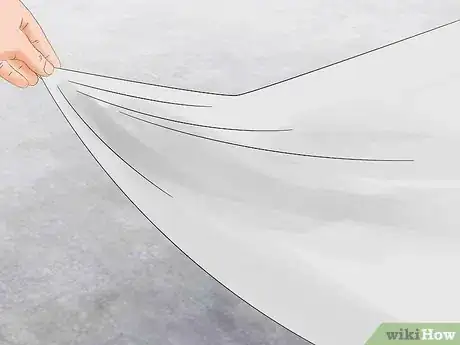


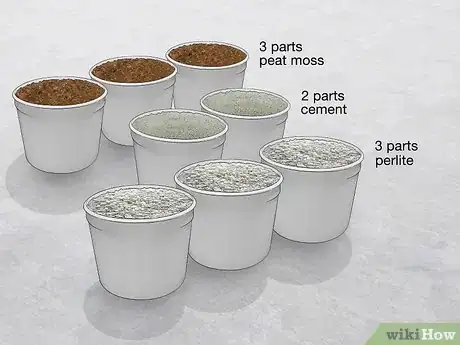
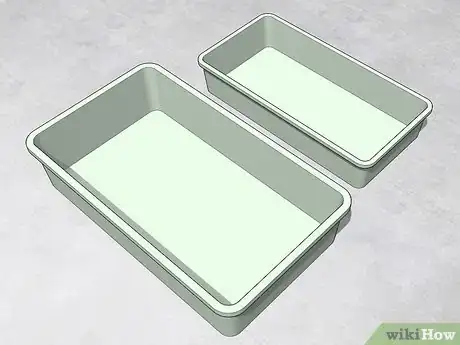

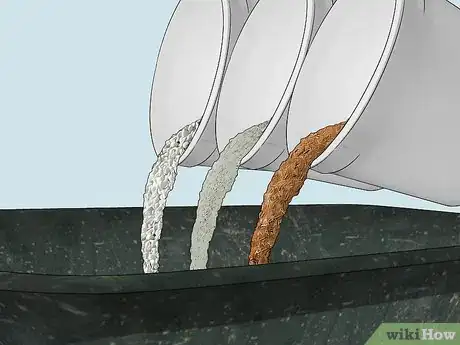
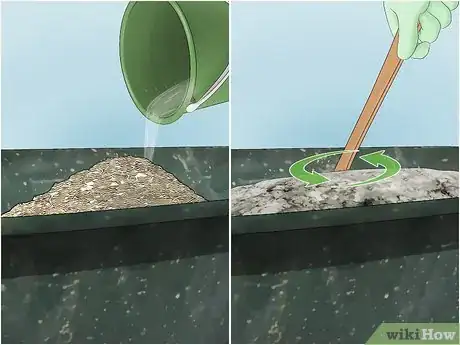
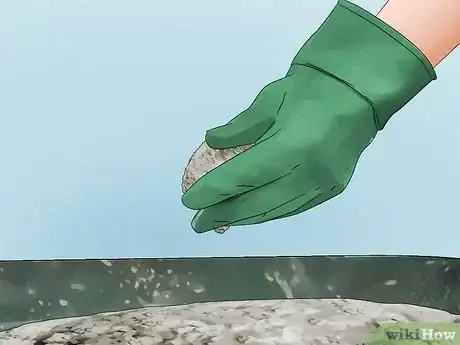
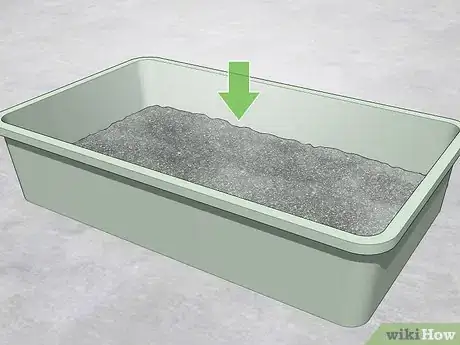
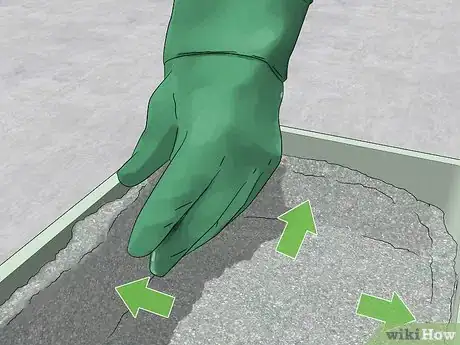
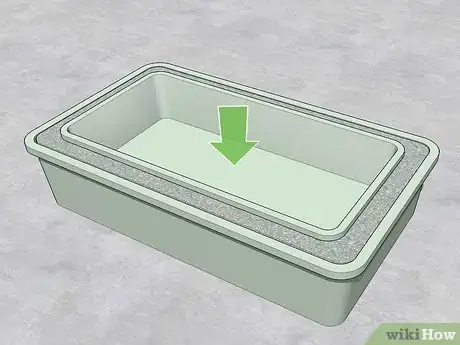
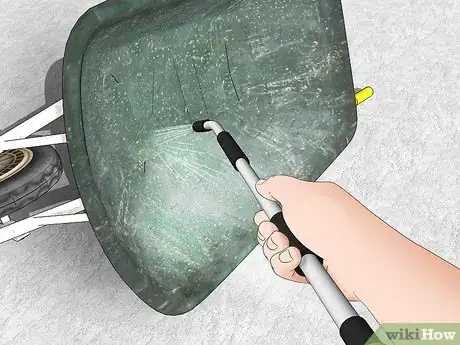

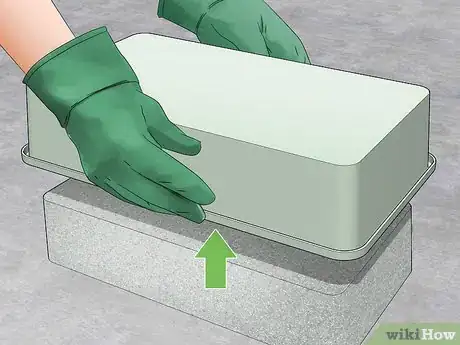

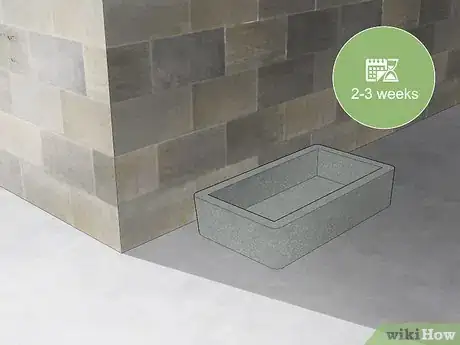
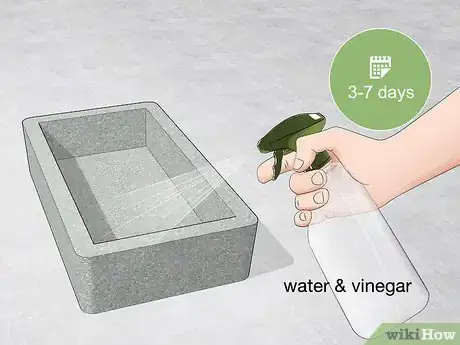
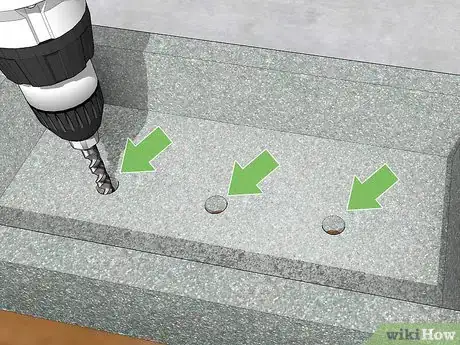
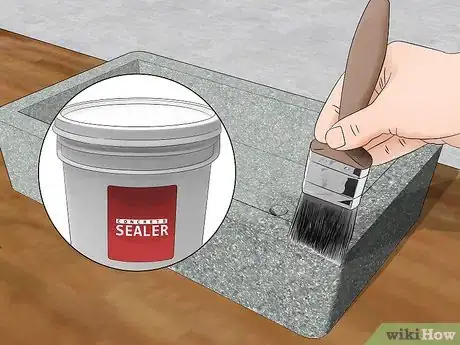

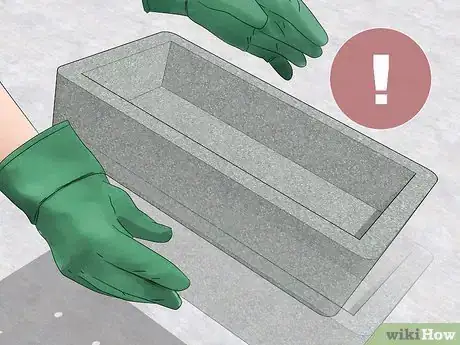
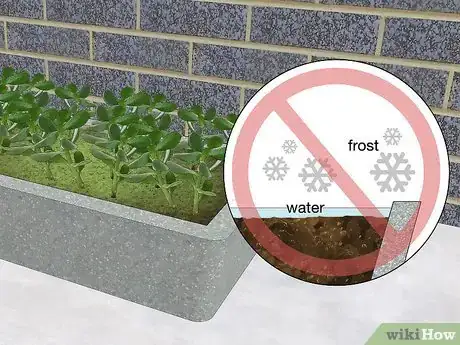
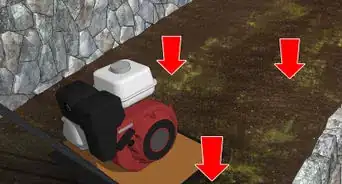
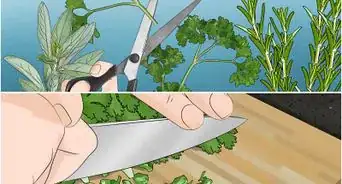
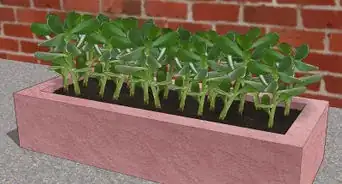

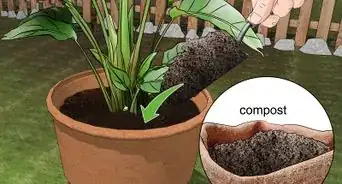
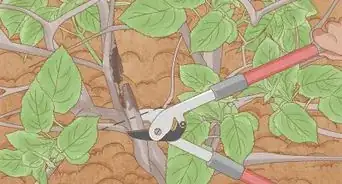

-Oven-Step-15.webp)













